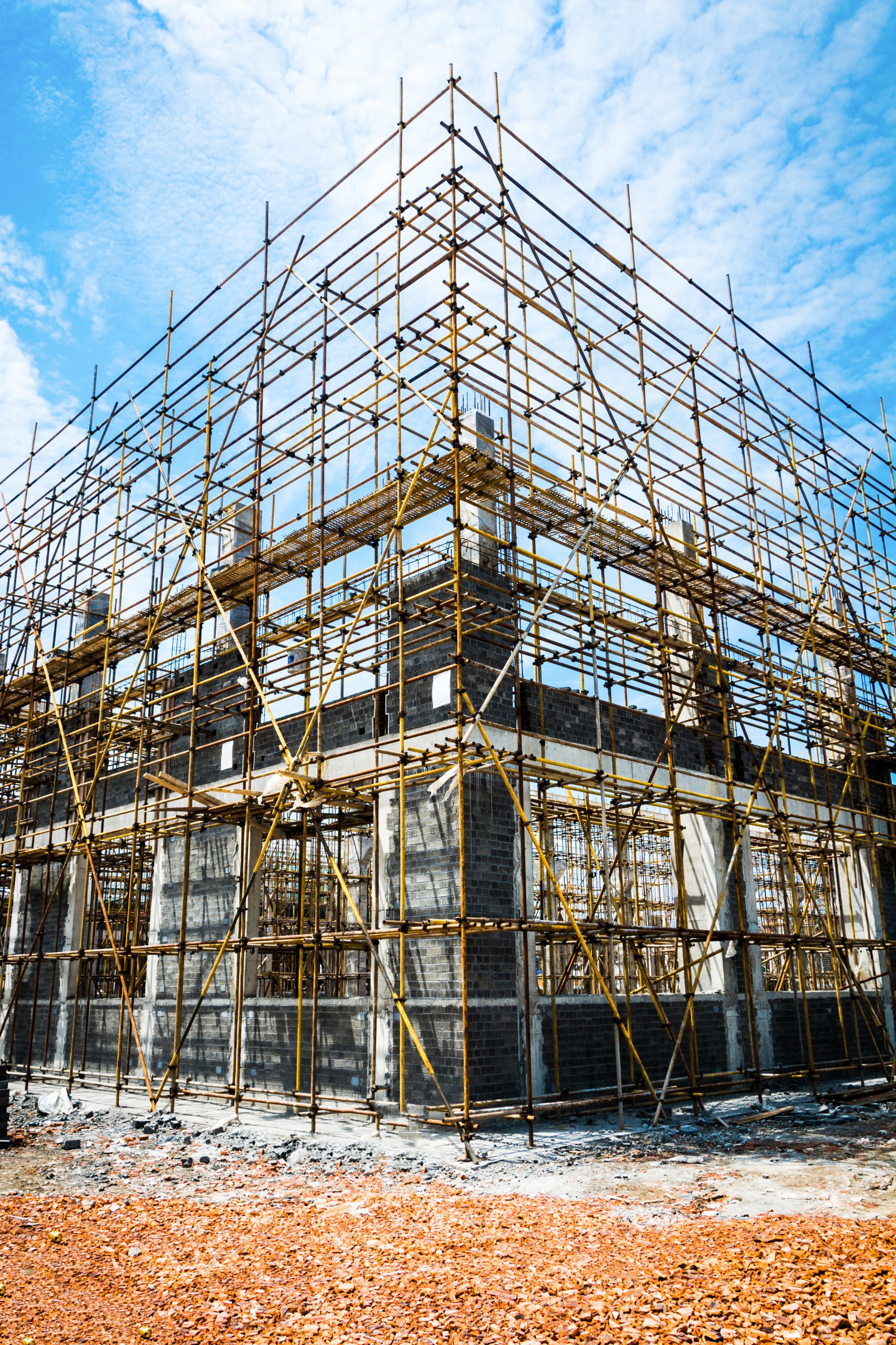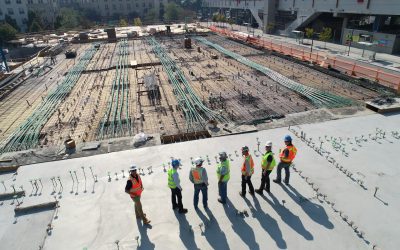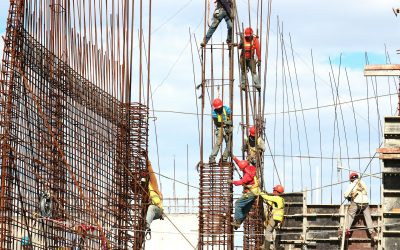Commercial property compliance reports are important documents that check if buildings meet legal and safety standards. These reports look at things like a building’s condition, safety features, and environmental impact. They help property owners, managers, and buyers understand how a building is doing and what might need to be fixed. Compliance reports keep buildings safe and working well, and also protect investments and reduce legal risks.
Key Components of Commercial Property Compliance Reports
- Building safety assessments
- Environmental compliance
- Accessibility requirements
- Fire safety regulations
- Planning permission status
- Energy efficiency ratings
- Health and safety measures
What Are Commercial Property Compliance Reports?
Commercial property compliance reports are detailed documents that check if a building follows all the necessary legal rules. These reports are really important for people who own or manage properties, or want to buy them. They give a full picture of how the building is doing, including how strong it is, how safe it is, how it affects the environment, and if it follows all the laws. These reports help figure out risks, plan maintenance, and make sure the property will last a long time.
These reports usually look at:
– Building safety assessments – Environmental compliance – Accessibility requirements – Fire safety regulations – Planning permission status – Energy efficiency ratings – Health and safety measuresUnderstanding these parts is really important for anyone involved with commercial properties. Each part plays a big role in making sure a commercial property is safe, works well, and follows the law. For example, planning permission in Ireland is especially important and needs expert knowledge to do it right. It involves understanding local building rules, regulations, and environmental concerns, which can really affect how a property can be developed and how much it’s worth.
The Legal Framework for Commercial Property Compliance
The legal rules for commercial property compliance in Ireland are complicated and always changing. Property owners and managers need to keep up with different regulations to make sure their buildings stay compliant. This means they need to keep learning and often get help from legal experts who know about property law. The rules are made to keep people safe, protect the environment, and make sure commercial spaces are good quality.
Important legal things to think about include:
- Building Control Acts: These control how buildings are designed, built, and changed, making sure they’re safe and accessible.
- Safety, Health and Welfare at Work Acts: These laws focus on making sure workplaces are safe for employees and visitors.
- Fire Services Acts: These set rules for fire safety in buildings, including emergency exits, fire alarms, and firefighting equipment.
- Waste Management Acts: These deal with how commercial properties should handle waste and recycling.
- Data Protection Acts: These laws are becoming more important for commercial properties, especially those that handle sensitive information.
These laws are the foundation of the legal framework behind planning permission and property compliance. Understanding this framework is really important to avoid legal problems and make sure properties run smoothly. It’s important to remember that these laws change regularly to keep up with new technology, environmental concerns, and what society needs. Property owners and managers need to stay alert and keep learning about these legal changes to stay compliant.
Essential Elements of Commercial Property Compliance Reports
Commercial property compliance reports cover several important areas to make sure a building meets all the necessary standards. These reports are detailed documents that look closely at different parts of the property. Let’s break down some of the key elements:
Building Safety Assessments
These assessments check if the building is structurally safe for people to use. They look at things like foundations, walls, roofs, and other important parts of the building. Engineers often do these checks using special techniques to see how the building is doing. They also look at past maintenance records and any history of structural problems or repairs.
Environmental Compliance
This part looks at how the property affects the environment. It covers things like waste management, energy efficiency, and any pollution risks. These reports often check air quality, water use and disposal, and if there are any dangerous materials. They might also look at how much carbon the property produces and suggest ways to be more environmentally friendly, like using renewable energy or improving insulation.
Accessibility Requirements
Making sure a building is accessible to everyone, including people with disabilities, is a big part of compliance. This might involve checking for ramps, elevators, and proper signs. Accessibility checks also look at things like lighting, sound, and if there are any special technologies to help people. Following accessibility rules not only keeps the property legal but also makes it more inclusive and potentially more valuable.
Fire Safety Regulations
Fire safety is super important in any commercial property. Reports will check fire escape routes, fire-resistant materials, and if there’s the right firefighting equipment. This includes looking at the building’s fire alarms, sprinkler systems, and emergency lights. Fire safety checks also think about how the building is used, as different types of commercial properties might have different fire safety needs.
Understanding these elements is crucial when preparing essential documents for planning permission approval. Each part plays a big role in making sure a commercial property is compliant and safe overall. These reports not only help keep the property legal but also make it safer, more efficient, and more valuable. Regular checks and updates to these reports are important to keep up with changing rules and standards in the commercial property world.
The Role of Planning Permission in Compliance Reports
Planning permission is a really important part of commercial property compliance. It makes sure that any development or changes to a property follow local rules and community plans. Planning permission isn’t just for new buildings; it’s also needed for big changes to existing buildings, changes in how a building is used, and sometimes even for renovations. This process carefully looks at things like how the development affects the environment, its design, and how it fits in with the area around it.
Temporary Planning Permission
Temporary planning permissions are given for a limited time. They’re often used for short-term projects or to test how a development affects an area before giving permanent permission. This type of permission is useful for seasonal businesses, pop-up stores, or temporary structures. It allows for flexibility in land use while letting local authorities check the impact of the development after a certain time. Temporary permissions often come with specific rules that must be followed, like removing structures or putting the site back to how it was after the permission ends.
Permanent Planning Permission
Permanent planning permissions are for long-term use and development. They allow for bigger changes to a property and usually need a more detailed application process. This type of permission is necessary for most commercial developments, including new buildings, major renovations, or big changes in how a property is used. The application process for permanent planning permission often needs detailed plans, environmental impact studies, and sometimes public consultations. Once granted, permanent planning permission usually lasts indefinitely, although there might be conditions that need to be met throughout the property’s life.
Understanding the difference between temporary vs. permanent planning permission is really important for property owners and developers. It can greatly affect the scope and timeline of a project. For example, temporary permission might be good for a short-term business venture, while permanent permission would be needed for setting up a long-term business. The choice between these types of permissions can affect investment decisions, project timelines, and even whether a commercial development is possible.
Digital Mapping and Land Registry Compliance
In recent years, there’s been a big shift towards using digital mapping systems for property compliance. This change is especially important for land registry compliance, which is going to be fully digital by 2025. Moving to digital systems is a big change in how property information is recorded, accessed, and managed. It offers many benefits, like better accuracy, faster processing times, and easier access to property data.
Key aspects of digital mapping and land registry compliance include:
- Accurate property boundaries: Digital mapping allows for precise marking of property boundaries, reducing disputes and making property ownership clearer.
- Digital records of property ownership: Electronic records provide a more secure and easily accessible way to store and find property ownership information.
- Streamlined property transactions: Digital systems can speed up property transactions, making the process more efficient for buyers, sellers, and legal professionals.
- Improved data accuracy and accessibility: Digital records reduce the risk of errors that can happen with manual record-keeping and make it easier for authorized people to access property information.
The move towards digital mapping for land registry compliance in 2025 will greatly affect how commercial property compliance reports are prepared and maintained. It’s important for property owners and managers to stay informed about these changes. The switch to digital systems might require updates to existing property documents and possibly new surveys or assessments to match the digital mapping standards. This change also offers opportunities for more integrated property management systems, where compliance data can be more easily connected with other aspects of property administration and maintenance.
Energy Efficiency and Sustainability in Compliance Reports
Energy efficiency and sustainability are becoming more and more important in commercial property compliance. These factors not only help protect the environment but can also save property owners a lot of money. As people around the world become more aware of climate change, the rules about energy use and sustainability in buildings are getting stricter. Compliance reports now often include detailed checks of a property’s environmental impact and how well it uses energy.
Key aspects of energy efficiency and sustainability in compliance reports include:
- Energy Performance Certificates (EPCs): These give a rating of how energy efficient a building is and are now required for most commercial properties. EPCs show how much energy a building uses and suggest ways to improve.
- Sustainable building practices: This includes using eco-friendly materials, efficient waste management systems, and ways to save water. Compliance reports might check how well these practices are being used and suggest areas for improvement.
- Green building certifications: Such as LEED (Leadership in Energy and Environmental Design) or BREEAM (Building Research Establishment Environmental Assessment Method). These certifications can make a property more valuable and attractive to tenants who care about the environment.
- Renewable energy implementation: Checking existing or potential renewable energy sources, like solar panels or wind turbines, and how they’re integrated into the building’s energy system.
Understanding these aspects is crucial when looking for top tips for planning permission approval, as many local authorities now prioritize sustainable development when making decisions. Showing a commitment to energy efficiency and sustainability can greatly improve the chances of getting planning permission for new developments or major renovations. Also, properties that are very energy efficient and have sustainable features often can charge higher rents and have fewer empty spaces, making them better investments in the long run.
Health and Safety Compliance in Commercial Properties
Health and safety compliance is a very important part of managing commercial properties. It makes sure that the property is safe for everyone who uses it or visits. This area of compliance has become even more important recently, especially because of global health concerns and changes in how people work. Good health and safety measures not only protect people but also protect businesses from potential legal problems.
Key areas to focus on include:
- Workplace safety regulations: This covers many things, from proper lighting and air flow to comfortable workspaces and safe equipment use. Regular checks for risks and safety audits are important to stay compliant.
- Public health considerations: This has become more important lately, including things like better air cleaning systems, touchless technologies, and improved cleaning practices. Compliance reports now often check if a property is ready to handle public health emergencies.
- Emergency preparedness and response plans: These plans outline what to do in different emergencies, like fires, natural disasters, and security threats. They should be updated regularly and everyone in the building should know about them.
- Regular safety inspections and maintenance: This includes checking electrical systems, elevators, fire safety equipment, and other important building systems. Keeping good records of these inspections is essential for compliance.
Understanding the role of local authorities in planning is crucial for ensuring health and safety compliance, as these bodies often set and enforce safety standards for commercial properties. Local authorities might do inspections, give guidelines, and ask for regular reports on health and safety measures. Staying in close contact with these authorities and being proactive in following their recommendations can help ensure ongoing compliance and avoid potential penalties or closure orders.
Financial Implications of Compliance Reports
Compliance reports can have big financial effects for commercial property owners and managers. While the costs of staying compliant can be high, they should be seen as an investment in the property’s long-term value and viability. Understanding these financial aspects is important for effective property management and budget planning.
These can include:
- Cost of compliance assessments: Regular inspections and assessments by qualified professionals can be expensive. However, these costs are often less than the benefits of finding and fixing issues early.
- Potential penalties for non-compliance: Not meeting regulatory requirements can result in big fines, legal fees, and even forced closure of the property. The financial impact of non-compliance can be much more than the cost of staying compliant.
- Impact on property valuation and transactions: A property with a good compliance record is often more valuable and easier to sell or rent. On the other hand, compliance issues can significantly reduce a property’s market value and make it less attractive to potential buyers or tenants.
- Investment in necessary upgrades or modifications: Compliance reports might identify areas that need improvement or upgrades. While these can be costly, they often lead to long-term savings through improved efficiency and reduced risk of future compliance issues.
It’s important to discover common planning permission pitfalls to avoid unnecessary costs and delays in the compliance process. Many property owners face challenges when trying to get planning permission, which can lead to project delays and extra expenses. Being aware of these common pitfalls and planning accordingly can help make the process smoother and reduce overall costs. Additionally, working with experienced professionals who understand the details of local planning regulations can be very helpful in avoiding costly mistakes and ensuring smooth compliance.
The Process of Conducting a Commercial Property Compliance Report
Conducting a commercial property compliance report involves several key steps. This process is thorough and requires attention to detail to make sure all aspects of compliance are carefully assessed and documented. Here’s a closer look at each step:
- Initial property assessment: This involves a first review of the property’s documents, history, and current use. It may include talking with property managers and occupants to understand any known issues or concerns.
- Document collection and review: This step involves gathering and analyzing all relevant documents, including previous compliance reports, building plans, maintenance records, and any correspondence with regulatory bodies. These documents provide a foundation for understanding the property’s compliance history and current status.
- On-site inspections: Qualified professionals conduct thorough on-site inspections to assess various aspects of the property. This may include structural assessments, safety checks, environmental evaluations, and reviews of building systems. These inspections often use specialized equipment and techniques to ensure a comprehensive evaluation.
- Report compilation and recommendations: Based on the document review and on-site inspections, a detailed report is put together. This report outlines findings, identifies areas of non-compliance or potential concern, and provides recommendations for addressing any issues. The report should be clear, comprehensive, and actionable, giving property owners a roadmap for maintaining or achieving full compliance.
Each step is crucial in ensuring a comprehensive and accurate compliance report. Understanding the essential documents for planning permission approval is a key part of this process. These documents may include site plans, architectural drawings, environmental impact assessments, and various certifications. Having all necessary documentation prepared and organized can significantly streamline the compliance reporting process and help identify any gaps in the property’s compliance status.
Common Challenges in Commercial Property Compliance
Commercial property owners and managers often face several challenges when it comes to compliance. These challenges can vary depending on the property’s age, location, and use, but some common issues are seen across the industry. Addressing these challenges proactively can help maintain compliance and avoid potential legal and financial problems.
- Dealing with older properties that may not meet current standards: This is a big challenge, especially in cities with a mix of old and new buildings. Upgrading older properties to meet current regulations can be expensive and complicated, often requiring careful planning to balance preservation with compliance.
- Navigating complex and changing regulations: Compliance requirements are always evolving, reflecting changes in technology, environmental concerns, and societal needs. Staying informed about these changes and understanding how they affect specific properties can be challenging and time-consuming.
- Balancing compliance requirements with business operations: Implementing compliance measures can sometimes disrupt normal business activities. Finding ways to maintain compliance while minimizing disruption to tenants and occupants is a delicate balance that property managers must achieve.
- Managing the costs associated with compliance upgrades: While necessary, compliance-related upgrades and modifications can be expensive. Budgeting for these costs and prioritizing upgrades based on importance and regulatory deadlines is a common challenge for property owners.
Understanding these challenges is crucial for effective property management. For more insights, check out our guide on common planning permission pitfalls. This resource provides valuable information on navigating the planning permission process, which is often a key aspect of maintaining property compliance, especially when undertaking renovations or changes in property use.
The Role of Professional Consultants in Compliance Reporting
Professional consultants play a really important role in commercial property compliance reporting. Their knowledge and experience can be very helpful in dealing with the complex world of property regulations. These professionals bring deep understanding that can help property owners and managers not only achieve compliance but also make their properties more efficient and valuable.
Benefits of hiring expert consultants include:
- In-depth knowledge of current regulations: Professional consultants stay up-to-date with the latest regulatory changes and can provide insights into how these changes might affect specific properties. This knowledge is crucial for proactive compliance management.
- Experience in conducting thorough property assessments: Consultants have the skills and tools to conduct comprehensive property assessments, identifying potential issues that might be missed by less experienced people. Their expertise ensures that all aspects of compliance are thoroughly evaluated.
- Ability to provide actionable recommendations: Based on their assessments, consultants can offer practical, prioritized recommendations for addressing compliance issues. These recommendations often include cost-effective solutions and strategies for implementation.
- Support in dealing with local authorities: Experienced consultants often have established relationships with local planning and regulatory bodies. This can be very helpful when navigating complex approval processes or addressing compliance challenges.
At Mulqueen Consulting, we specialize in providing comprehensive compliance reporting services, ensuring your commercial property meets all necessary standards. Our team of experts brings years of experience in property compliance, offering tailored solutions to meet the unique needs of each property. We understand the nuances of local regulations and can guide property owners through the complexities of compliance reporting, helping to minimize risks and maximize property value.
Future Trends in Commercial Property Compliance
The world of commercial property compliance is always changing, driven by new technology, changing environmental concerns, and shifting expectations in society. Staying ahead of these trends is really important for property owners and managers to ensure long-term compliance and property value. Here are some key trends to watch for:
- Increased focus on sustainability and energy efficiency: As people worry more about climate change, rules about building sustainability are getting stricter. Future compliance reports are likely to put even more emphasis on energy efficiency, using renewable energy, and overall environmental impact.
- Greater use of technology in compliance monitoring: Advanced sensors, IoT devices, and AI-driven analytics are becoming more common in building management. These technologies can provide real-time monitoring of various compliance aspects, from air quality to energy usage, allowing for more proactive management of compliance issues.
- More stringent regulations around building safety: After some high-profile building safety incidents, regulations around structural integrity, fire safety, and emergency preparedness are likely to become more comprehensive and strict.
- Growing importance of data protection in property management: With more building management systems becoming digital, data protection and cybersecurity are becoming critical compliance issues. Future compliance reports may need to address how property management systems protect sensitive data.
Staying informed about these trends is crucial for future-proofing your commercial property. For more insights, check out our expert insights on planning permission in Ireland. This resource provides valuable information on how planning regulations are evolving and what property owners can expect in the future. Understanding these trends can help in making informed decisions about property investments, renovations, and long-term management strategies.
Conclusion: The Importance of Staying Compliant
Commercial property compliance reports are more than just a legal requirement – they’re a crucial tool for ensuring the safety, efficiency, and value of your property. In today’s complex regulatory environment, staying compliant is not just about avoiding penalties; it’s about creating safe, efficient, and sustainable spaces that meet the needs of occupants and the broader community. By staying on top of compliance issues, you can:
- Protect your investment: Compliance helps maintain and even increase the value of your property. It reduces the risk of costly legal issues and helps ensure the property remains attractive to tenants and buyers.
- Ensure safety: Compliance with safety regulations protects occupants, visitors, and the surrounding community from potential hazards.
- Improve efficiency: Many compliance requirements, especially those related to energy efficiency, can lead to reduced operating costs over time.
















